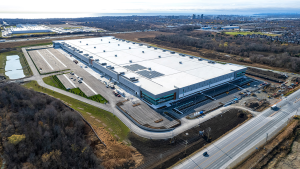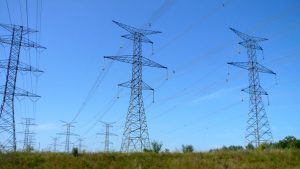In 2023 catastrophic insured losses in Canada were $3.4 billion. Uninsured losses paint an even grimmer picture as they are usually three to four times higher a year.
But there is some good news.
“Guidance and tools are readily available to reduce the key physical climate risks in Canada: flooding, wildfire and extreme heat,” said Kathryn Bakos, managing director of finance and resilience with the Intact Centre on Climate Adaptation, an applied research centre with a national focus within the Faculty of Environment at the University of Waterloo.
Bakos, a webinar panellist discussing building resiliency to climate change, said the Intact Centre has worked with experts across Canada “to develop practical, meaningful and cost-effective ways to adapt to the physical risks of climate change.”
She called insurance “a very good proxy for the growing risk.”
Annual catastrophic insurable losses for extreme weather in Canada between 1983 and 2008 ranged from $250 to $450 million, but losses now average $2.1 billion annually.
All numbers are corrected for inflation.
Flooding represents more than 60 per cent of all the annual losses and costs are increasing, she said at the webinar titled Accelerating To Zero: Resilient Transition Planning, which was hosted by the Canada Green Building Council.
RJC Engineers uses various tools for climate forecasts for all types of weather that include carbon projections to help predict the frequency and severity of the changing climate in different parts of Canada, panellist Mohammad Fakoor, associate and building performance group leader with RJC, told the audience.
He said tools available can help owners determine what adaptation measures match with the risk factors.
Fakoor said HealthyPlan.city, for example, uses digital tools to provide data on urban neighbourhoods across Canada.
“We can look at different parameters such as air pollution and the impact on a vulnerable population so we can tailor our adaptations to make sure they are equitable.”
Bakos said a recent decision by a major financial group to stop offering new mortgages for homes in high-risk areas probably will impact commercial real estate at some point.
“We have to start building that resilience now so we don’t get to the point that we don’t have access to insurance…and then these assets become stranded,” she said.
It is important to identify the largest risks and what asset improvements will net the highest benefits, said panellist Marianne Armstrong, director of the Climate Resilient Built Environment Initiative with the National Research Council of Canada.
Municipal water plants and power stations might be examples of priority climate resilience investments, she said.
She added there is an opportunity to increase a building’s climate resilience without a large expense when owners are doing energy retrofits.
There are various validation organizations that can verify resiliency improvements on existing buildings. The Canadian Centre for Climate Services and climatedata.ca are two starting points, said Armstrong.
She told the webinar Infrastructure Canada is expecting to launch a tool kit portal to provide adaptation measures for specific projects this fall.
Bakos said there is flood resilience guidance for commercial real estate in Canada that covers 20 practical actions for climate change preparedness.
The list includes backup power requirements, water sensors and flood barriers. The information is available on Intact’s website under the heading Reports and Resources.
“There’s lots of research, tools, resources and guidance that have been published so there is nothing holding us back from integrating these adaptations into transition plans” in a move toward meeting net-zero standards, said Michael Sugar, the panel’s moderator and director of Zero Carbon Buildings for the CAGBC.
He said Canada has more than 480,000 commercial buildings, representing about 800 million square metres.
“All of these existing buildings to some degree will be adversely impacted by a changing climate.”
The webinar was sponsored by PCL Construction.










I am the past chair of the new standard CSA S478 Durability in Buildings – a 2019 standard. We created that standard for building envelopes to cause designers to do two things.
1. look to the future for environmental loads – not the past, which has been the way buildings have been designed since there were building codes in Canada. ECCC is working on that data and was a participant in the standard development.
2. design durability into the building (envelope) such that the service life of building elements that could not be easily and cost-effectively replaced or maintained, were to last the design life of the element.
Why the National Building Code of Canada did not immediately adopt the standard has several suspected reasons not the least of which is assumed increases in initial construction cost. The CSA committee was more focused on life-cycle considerations which is consistent with reduced GHG over that life.
Designers can still use the standard regardless of whether NBCC has incorporated it into its minimum requirements and I encourage them to do so – not just because it will reduce GHG but because it represents the best practice and thus impacts potential negligence claims for inadequate design for long-life buildings.